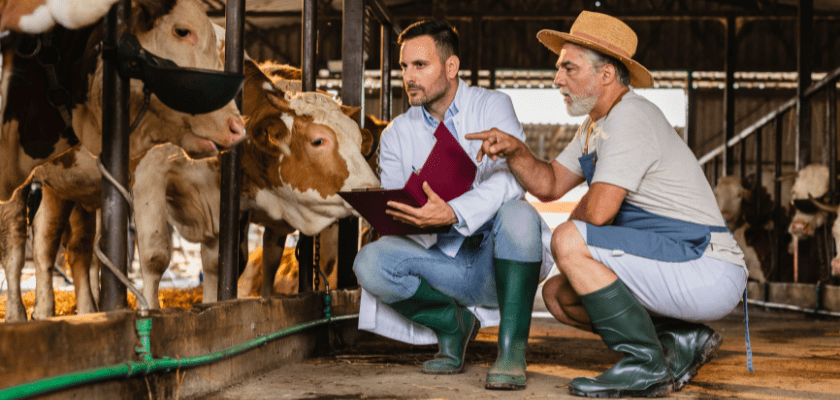Perform a hazard assessment to ensure third party safety on your farm: a step by step guide

When outside contractors roll into the yard, are the drivers aware of the hazards around them? Do they know what controls are in place? If not, do they know where to get this information?
Many farm employers have completed hazard assessments focused solely on keeping their employees, buildings, and equipment safe. However, as a facility owner it is important to understand that you have a responsibility to provide a safe work environment for any third-party workers on your premises too, such as the milk driver, feed delivery driver, veterinarian technician and custom operator.
The best way to ensure these parties are protected from onsite hazards is to revisit your hazard assessment and examine what tasks may put third-party workers at risk.
Conducting hazard assessment using RACE
RACE (Recognize, Assess, Control, Evaluate) is an acronym often used when explaining how to conduct a hazard assessment and a widely accepted method for controlling hazards and reducing injuries and illness. Here’s RACE in action.
Step 1: Recognize the Hazard.
Hazards can be grouped into one or more of the following six categories: physical, biological, chemical, psychological, safety, and musculoskeletal disorders. You need to look at each of the outside party’s roles at your facility through the lens of these six categories.
For example, a feed truck driver may face biological hazards if they were to make contact with sick animals on site. In the winter, that same driver may be exposed to icy conditions; a hazard identified when looking at their role through the safety lens.
Step 2: Asses the risk level of each hazard. When assessing risk level, probability and severity are the main factors to consider. How likely is it that a particular hazard will cause illness or injury? How severe of an outcome would it be?
In the example above, the likelihood of the delivery driver being exposed to zoonotic diseases is quite low when staying in the feed room. However, if the same driver needs to take feed to the other side of the barn through the pens, the likelihood of being exposed is quite high. The severity, or how bad the injury or illness could be, would be the same for both examples regardless.
Step 3: Control the hazards, especially ones assessed as high risk.
If you cannot eliminate the hazard completely, consider the most practical administrative or engineered controls to reduce it.
For example, if feed is picked up by an employee instead of being delivered to the farm, the hazard of driver exposure would be eliminated. However, if this is not viable, we could put administrative controls in place to reduce the likelihood of biological exposure to delivery personnel, such as letting the feed company know drivers can’t go beyond the feed room and posting signs with this rule on the facility entrance doors.
Step 4: Evaluate the effectiveness of the controls. Shortly after implementing controls, reassess the risk level of each hazard. The expectation is that it moves from high to moderate to low with the controls in place.
It’s recommended to reassess hazards on an annual basis or when materials or processes change. Using our example above, changing procedures so the feed driver does not enter the pens would be reducing our exposure risk from a high or moderate level, down to a low level.
Communicate
Once you have completed the RACE method of hazard assessment, it is important to communicate the findings and results to workers. In the case of external work parties, these risks can be communicated when contracting the services with the company, by posting signs and notices on site, or by having an employee verbally communicate the risks and controls when another party arrives on site.
Using RACE on your farm
Make hazard assessments easy using this free hazard assessment tool. Not only will this act as a guide, it offers you documentation of your efforts.
By completing RACE and communicating the controls to both staff and third-party workers, you can ensure everyone is safe when they enter your facilities.




